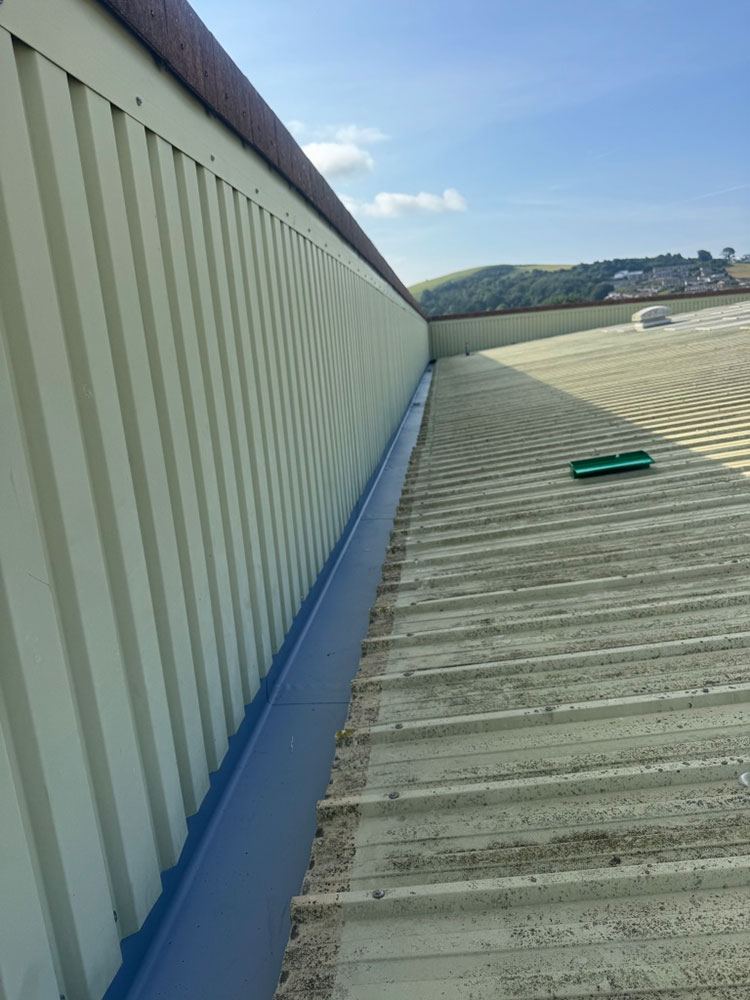
A warehouse roof might seem like just another structural layer, but in reality, it plays a critical role in safeguarding operations, stock, and safety. Poorly maintained roofing leads not only to leaks and damage, but also to business interruption, energy inefficiency, and health risks. For facilities managers, proactive roof care is not a luxury—it’s essential.
Warehouses, especially those with flat or low-slope roofs, present unique maintenance challenges. This article outlines the core considerations every facilities manager should understand to keep a warehouse roof in peak condition: inspection routines, drainage management, and light penetration solutions.
1. Regular Inspections: The First Line of Defence
Routine inspections are essential for detecting early signs of wear before they evolve into costly problems. Warehouses are large, often high-roofed spaces where damage can go unnoticed until it’s severe.
What to Check
-
Membrane Integrity: Look for blisters, splits, punctures, or signs of material degradation (especially on single-ply systems like EPDM, TPO, or PVC).
-
Seams and Flashings: Inspect all joints, edges, and roof penetrations for lifting, separation, or cracking.
-
Rooflights and Domes: Check glazing for cracks, discolouration, or failed seals.
-
Interior Signs: Watch for ceiling stains, drips, rust marks, or damp odours—these may indicate a roofing issue even if the surface appears sound.
Frequency
-
Bi-annual Inspections: Ideally performed in spring and autumn.
-
After Severe Weather: High winds, heavy rain, or snow loads warrant additional checks.
-
Before Major Equipment Installation: To confirm load-bearing areas are secure.
A combination of internal and rooftop inspections ensures nothing is missed, especially in high-bay warehouses where ceilings are not always easily visible from floor level.
2. Drainage Management: Preventing Ponding and Overload
Warehouses with flat or low-pitch roofs depend on functioning drainage systems to remove rainwater efficiently. Blockages or poor design can cause ponding—standing water that damages membranes and adds weight to the roof structure.
Common Issues
-
Blocked Outlets and Gutters: Leaves, silt, packaging fragments, or nesting birds are frequent culprits.
-
Insufficient Slope: Subtle sagging or settlement over time can disrupt water flow.
-
Hidden Debris: Water may appear to drain properly, but partial obstructions inside downpipes can cause slower build-up or backflow.
Best Practices
-
Quarterly Clearance: Remove debris from gutters, internal outlets, and scuppers.
-
Visual Water Checks: After rainfall, inspect the roof for any remaining puddles. Water should not remain more than 48 hours after precipitation.
-
Use of Tapered Insulation: In retrofit projects, tapered layers can be installed to redirect water more effectively toward drainage points.
-
Check Parapets and Upstands: Ensure that edges and terminations are watertight and not directing water where it shouldn’t go.
Even well-built drainage systems can underperform without active maintenance. Addressing water flow not only protects the roof but also prevents water from seeping into stored goods below.
3. Light Penetration Solutions: Balancing Natural Light and Performance
Many warehouses rely on rooflights, domes, or skylights to bring natural light into the space, reducing energy consumption and improving the working environment. However, these elements are often neglected during routine checks—and they age differently to the surrounding roof.
Common Problems
-
Discolouration: Over time, UV exposure causes rooflights to become cloudy, yellowed, or brittle—reducing their effectiveness and potentially cracking under stress.
-
Thermal Bridging: Poorly sealed rooflights can become thermal weak points, increasing heat loss or gain depending on the season.
-
Water Ingress: Perished gaskets or loose fixings allow leaks, particularly during wind-driven rain.
Maintenance Recommendations
-
Annual Light Transmission Check: Evaluate whether rooflights are still providing sufficient natural light for the space.
-
Sealant and Fixing Inspection: Check surrounding seals and mechanical fasteners for signs of fatigue or decay.
-
Cleaning: Remove surface grime, bird droppings, or dust films that reduce clarity.
-
Replacements: If rooflights are older than 15–20 years, they may be underperforming. Consider modern polycarbonate or GRP units with UV protection and better insulation ratings.
A clean, clear, and well-maintained rooflight system can significantly enhance warehouse visibility without increasing energy spend.
4. Additional Considerations for Warehouse Roof Maintenance
While inspection, drainage, and lighting are core, several supplementary factors can improve roof longevity and reduce unexpected problems.
Access Safety
-
Ensure safe, permanent access routes are in place—fixed ladders, handrails, and designated walkways.
-
Avoid ad-hoc maintenance that risks damaging roofing membranes through careless foot traffic.
Vegetation Control
-
Keep adjacent trees trimmed and away from rooflines to prevent debris and shading.
-
Moss or algae on the roof surface can indicate trapped moisture and should be removed.
Pest Deterrence
-
Birds and rodents may damage insulation, block drainage, or nest in roof voids.
-
Use humane deterrents or netting where appropriate.
Post-Work Checks
-
After contractors complete any rooftop work (e.g. HVAC or solar installs), inspect for unintended damage to the membrane, fixings, or outlets.
Conclusion
A warehouse roof that’s neglected can quickly become a business liability. From leaks and damaged stock to inflated heating costs or safety risks, the consequences of poor roof maintenance are rarely isolated.
By implementing regular inspection routines, keeping drainage systems clear, and maintaining light penetration features, facilities managers can stay ahead of problems—avoiding disruption, protecting assets, and ensuring safe, efficient operations.
A warehouse roof should not be out of sight or out of mind. With a proactive approach and attention to detail, it becomes a quiet asset—supporting your business reliably, year after year.









